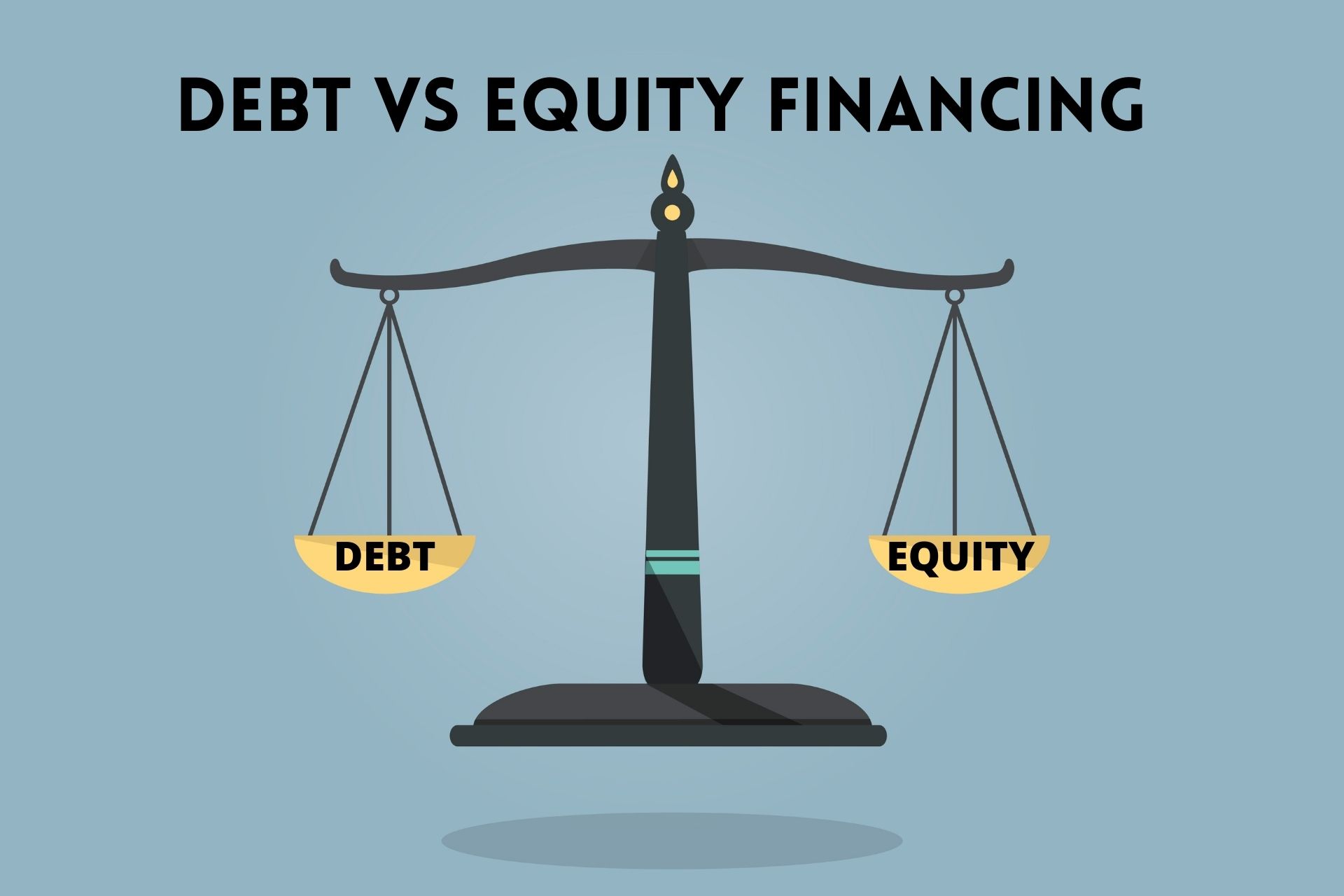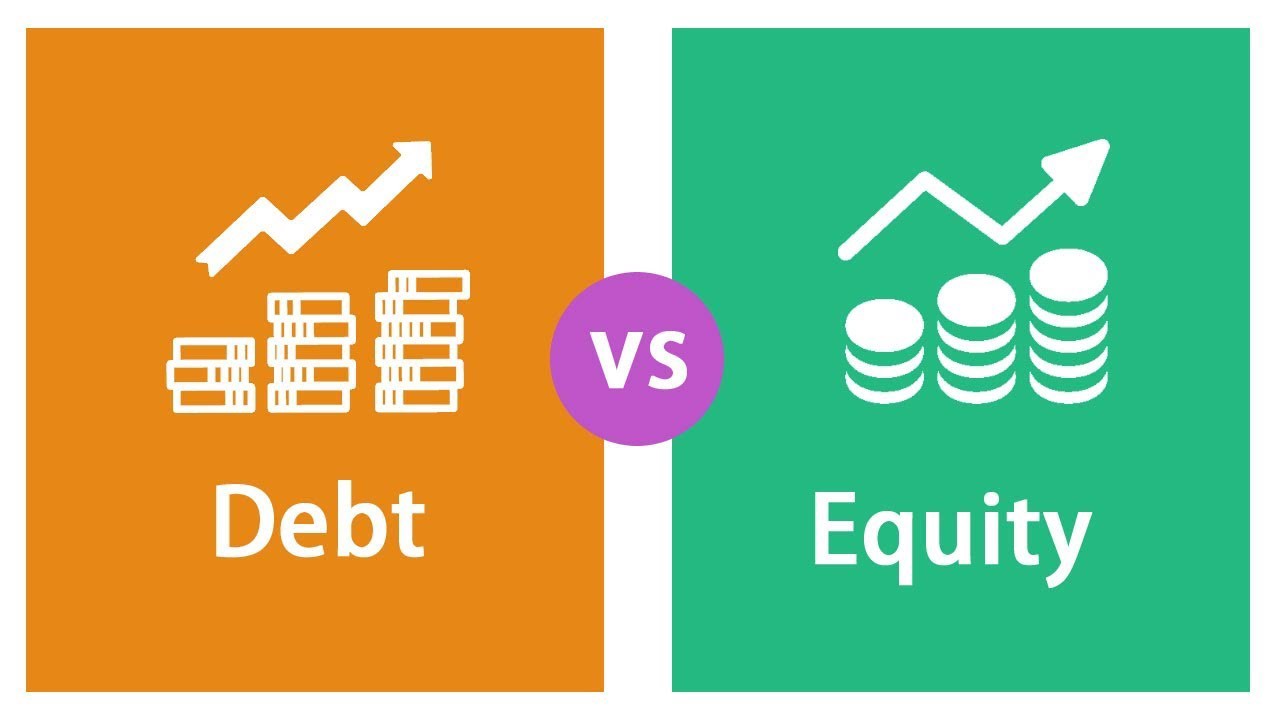

Finance
What Is A Debt Financing Round?
Modified: December 30, 2023
Learn about debt financing rounds in the world of finance and how they can help your business secure funding for growth and expansion.
(Many of the links in this article redirect to a specific reviewed product. Your purchase of these products through affiliate links helps to generate commission for LiveWell, at no extra cost. Learn more)
Table of Contents
Introduction
If you’re a business owner or entrepreneur looking for capital to fund your business expansion or operational needs, you may have come across the term “debt financing round”. But what exactly does it mean? In simple terms, a debt financing round is a method of raising capital for a company by issuing debt instruments, such as loans or bonds, to investors.
This form of financing is different from equity financing, where companies sell shares of ownership in exchange for funding. Debt financing, on the other hand, involves borrowing money that needs to be repaid with interest over a specified period of time.
Debt financing rounds are common among businesses of all sizes and across various industries. They can be an attractive option for companies that don’t want to dilute their ownership or give up control of their business through equity financing. However, it’s crucial to have a clear understanding of how debt financing rounds work and their advantages and disadvantages. By considering these factors, you can determine if this financing option is suitable for your business needs.
In this article, we will delve deeper into what a debt financing round entails, how it works, and the key considerations involved. Understanding these concepts will empower you to make informed decisions about your company’s financial strategy and ensure its long-term success.
Definition of Debt Financing Round
A debt financing round refers to the process in which a company raises funds by issuing debt securities to investors. These debt securities can take the form of loans, corporate bonds, convertible notes, or any other type of debt instrument. The company borrows money from investors and agrees to repay the principal amount along with interest over a predetermined period of time.
Debt financing rounds are typically conducted by businesses that are seeking to finance their operations, expand their infrastructure, invest in new projects, or manage their working capital. Instead of seeking equity investments where ownership and control of the company are shared with investors, debt financing allows businesses to maintain full ownership and control while accessing the funds they need.
In a debt financing round, the terms of the debt instrument are negotiated between the company and the investors. These terms include the interest rate, repayment schedule, maturity date, and any other conditions or covenants associated with the debt. Investors may also require collateral or security to mitigate the risk of non-payment.
The funds raised through a debt financing round can be used for various purposes, such as funding product development, expanding production capacity, hiring employees, or acquiring assets. Unlike equity financing, where investors become shareholders and participate in the company’s profits and losses, debt financing is purely a contractual relationship between the company and the investor. The company is obligated to make regular interest payments and repay the principal amount according to the agreed-upon terms.
Overall, debt financing rounds provide companies with a structured and predictable way to raise capital without diluting ownership or relinquishing control. It allows businesses to benefit from the financial leverage provided by debt, where the borrowed funds can be multiplied to generate higher returns on investment. However, it is important for companies to carefully assess their ability to service the debt and manage the associated risks before embarking on a debt financing round.
How Debt Financing Rounds Work
Debt financing rounds typically involve several steps and processes to ensure a successful capital raise. Here’s a breakdown of how debt financing rounds work:
- Evaluation of Financing Needs: The company determines the amount of capital it needs to raise and assesses its ability to take on additional debt. This evaluation takes into account factors such as projected cash flow, profitability, and financial stability.
- Creation of Debt Offering: The company works with financial advisors or lawyers to develop a comprehensive debt offering. This includes drafting the terms and conditions, interest rates, repayment schedule, security or collateral requirements, and any other relevant details.
- Engagement with Investors: The company identifies potential investors, such as banks, institutional investors, or private lenders, who may be interested in participating in the debt financing round. They engage with these investors to gauge interest and negotiate the terms.
- Investor Due Diligence: Investors conduct due diligence on the company to assess its creditworthiness and ability to repay the debt. This may involve reviewing financial statements, analyzing the company’s market position, and evaluating management team capabilities.
- Finalizing the Debt Agreement: Once the terms are agreed upon, the company and the investors sign a formal debt agreement that outlines the obligations and rights of both parties. This agreement serves as a legal contract and provides clarity on repayment terms.
- Issuance of Debt Securities: The company formally issues the debt securities to the investors, which can take the form of loan agreements, bonds, or other debt instruments. The investors provide the agreed-upon funds to the company.
- Repayment and Interest Payments: Throughout the term of the debt, the company makes regular interest payments to the investors as per the agreed-upon schedule. At the maturity date, the company repays the principal amount borrowed.
- Risk Management: The company manages the associated risks of the debt, such as interest rate fluctuations or default risk. It may implement risk management strategies, such as hedging, to mitigate the impact of these risks.
It’s important to note that the process and timeline of debt financing rounds can vary depending on the type of debt instrument, the size of the capital raise, and the complexity of the negotiation. Working with experienced professionals, such as investment bankers or corporate lawyers, can help ensure a smooth and efficient debt financing round.
Advantages of Debt Financing Rounds
Debt financing rounds offer several advantages for businesses seeking capital. Here are some key benefits:
- Maintain Ownership and Control: Unlike equity financing, debt financing rounds allow businesses to retain full ownership and control. The company does not have to dilute its ownership or give up a stake in the business to investors.
- Predictable Repayment Terms: When a company raises funds through debt financing, the repayment terms are typically predetermined and agreed upon by both parties. This provides a predictable repayment schedule, making it easier for the company to plan and manage its cash flow.
- Tax Benefits: Interest payments on debt are generally tax-deductible, reducing the company’s taxable income. This can result in significant tax savings, making debt financing a more cost-effective option compared to equity financing.
- Flexibility in Use of Funds: Companies have the freedom to use the funds raised through debt financing rounds for various purposes, such as expansion, working capital, or investments. There are no restrictions or obligations on how the funds are allocated, allowing companies to tailor the use to their specific needs.
- Potential for Lower Cost of Capital: Depending on the creditworthiness of the company, debt financing can offer lower interest rates compared to other forms of financing. This can result in a lower cost of capital, especially in environments with favorable borrowing conditions.
- Financial Leverage: By utilizing debt, companies can leverage their existing capital and generate higher returns on investment. The borrowed funds can be used to finance growth initiatives or take advantage of profitable opportunities that may not have been possible without external financing.
- Build Credit History: Successfully repaying debt obligations can help companies establish a positive credit history. This can improve the company’s future borrowing capacity and open doors to more favorable financing options in the long run.
While debt financing rounds offer numerous advantages, it’s important for companies to carefully assess their ability to service the debt and manage associated risks. Defaulting on debt obligations can have serious consequences for the company’s financial health and reputation. It’s advisable to seek professional advice and conduct thorough financial analysis before committing to a debt financing round.
Disadvantages of Debt Financing Rounds
While debt financing rounds provide businesses with access to capital, there are also some notable disadvantages that should be considered. Here are a few key drawbacks:
- Interest Payments: Unlike equity financing, where investors receive a share of the company’s profits, debt financing requires regular interest payments. These payments can strain the company’s cash flow, especially during periods of financial difficulty or economic downturns.
- Debt Servicing Obligations: Companies must adhere to the terms of the debt agreement, including making timely interest and principal repayments. Failure to do so may result in penalties, increased interest rates, or even legal action by the investors. This adds a level of financial discipline and obligation to the company.
- Reduces Financial Flexibility: Taking on debt can limit a company’s financial flexibility. The company is obligated to allocate a portion of its cash flow to debt repayment, which may restrict its ability to invest in other areas of the business or respond to unforeseen expenses or opportunities.
- Risk of Default: Any debt carries the risk of default, where the company is unable to meet its debt repayment obligations. Defaulting on debt can severely impact the company’s credit rating, making future financing more difficult and costly to obtain.
- Collateral or Security Requirements: Depending on the type and size of the debt financing round, investors may require collateral or security to mitigate their risk. This means that the company may need to pledge assets as security, increasing the potential loss in the event of default.
- Impact on Credit Rating: Taking on significant debt can impact a company’s credit rating. High levels of debt can be viewed negatively by credit agencies and lenders, making it more challenging and expensive to secure future financing.
- Market Interest Rate Risk: Debt financing often involves fixed interest rates, which means that if market interest rates rise, the company may end up paying higher interest costs compared to current market rates. This can put additional strain on the company’s financials.
It’s crucial for companies to carefully consider the potential drawbacks of debt financing rounds and undertake a comprehensive risk assessment before pursuing this form of financing. Companies should weigh the benefits against the potential risks and ensure that they have a solid repayment plan in place to mitigate the disadvantages associated with debt financing.
Key Considerations for Debt Financing Rounds
Before proceeding with a debt financing round, it’s important for businesses to carefully evaluate and consider a few key factors. These considerations will help determine if debt financing is the right option for the company’s financial needs and goals. Here are some key considerations to keep in mind:
- Financial Health and Stability: It’s essential to assess the company’s financial health and stability. Lenders and investors will evaluate the company’s financial statements, credit history, and cash flow to determine the level of risk associated with providing the debt financing. The company should have a strong track record of profitability and a clear plan for repaying the debt.
- Cash Flow and Debt Servicing Capacity: The company should have a thorough understanding of its cash flow and the ability to meet the debt servicing obligations. This includes interest payments and principal repayments. Conducting a comprehensive financial analysis will help determine the company’s ability to service the debt without compromising its daily operations or growth plans.
- Debt Structure and Terms: Carefully review the terms and structure of the debt financing. Consider factors such as interest rates, repayment schedules, and any requirements for collateral or security. Ensure that the terms align with the company’s financial capabilities and objectives. A thorough understanding of the debt structure is crucial to avoid any surprises or potential issues down the road.
- Risk Management: Assess and mitigate the risks associated with debt financing. Consider the impact of interest rate fluctuations, market volatility, and changes in the company’s financial circumstances. Implement risk management strategies such as hedging or contingency plans to safeguard the company’s financial stability and ability to repay the debt.
- Alternative Financing Options: Explore alternative financing options and compare them to debt financing. Evaluate the pros and cons of equity financing, government grants or loans, crowdfunding, or strategic partnerships. Each option has its own advantages and disadvantages, and selecting the right one depends on the specific needs and goals of the company.
- Professional Advice: Seek professional advice from financial advisors, investment bankers, or legal experts who specialize in debt financing. These professionals can provide valuable insights and guidance throughout the process, helping the company navigate the complexities and make informed decisions.
By carefully considering these key factors, businesses can effectively assess their readiness for debt financing rounds and make strategic decisions that align with their financial goals. It’s important to conduct thorough due diligence and seek expert advice to ensure the best possible outcome for the company’s long-term financial success.
Conclusion
Debt financing rounds offer businesses a valuable opportunity to raise capital without diluting ownership or relinquishing control. By issuing debt securities such as loans or bonds, companies can access the funds they need to finance their growth, expansion, or working capital requirements. However, it’s essential for businesses to carefully consider the advantages and disadvantages of debt financing before proceeding.
One of the significant advantages of debt financing rounds is the ability to maintain ownership and control over the company. The predictable repayment terms and potential tax benefits are also appealing factors. Debt financing allows businesses to maintain financial flexibility and leverage their existing capital for higher returns on investment.
On the other hand, debt financing rounds come with potential drawbacks. Regular interest payments, debt servicing obligations, and the risk of default require careful financial planning and management. Taking on debt can limit financial flexibility and impact the company’s credit rating. Market interest rate fluctuations and collateral or security requirements should also be considered.
As businesses evaluate debt financing rounds, they must take into account key considerations, such as financial health, cash flow, debt structure, risk management, and alternative financing options. Seeking professional advice from financial experts or legal professionals is crucial to make informed decisions and navigate the complexities of the debt financing process.
In conclusion, debt financing rounds can be an effective way for businesses to access the capital they need while retaining ownership and control. By weighing the advantages and disadvantages and conducting thorough financial analysis, companies can determine if debt financing is the right option for their specific needs and goals. Careful planning, diligent risk management, and professional guidance will ensure a successful debt financing round that contributes to the company’s long-term financial success.














